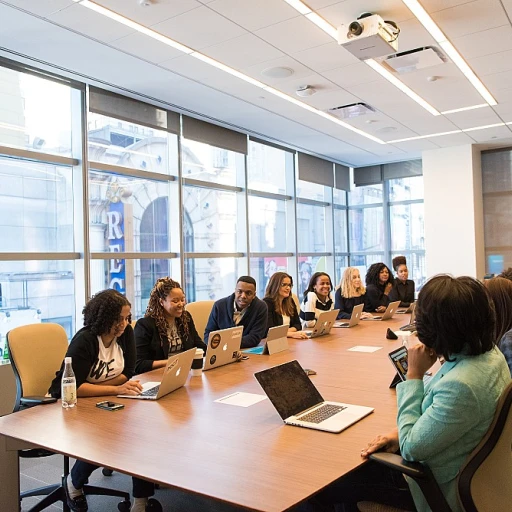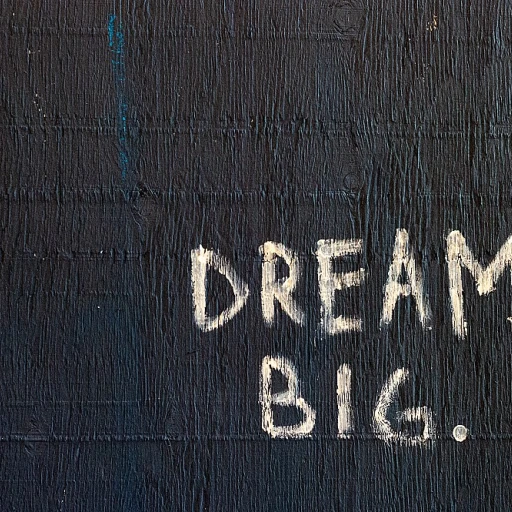The Role of Organizational Culture in Employee Feedback
The Influence of Corporate Culture on Feedback Mechanisms
In today's dynamic work environments, the interplay of organizational culture and employee feedback is pivotal for ensuring sustained growth and development. Organizations looking to create a thriving workplace often focus on understanding and enhancing their corporate culture. The roles that culture plays in shaping feedback mechanisms are multi-faceted.
When the culture is nurtured to prioritize open and honest communication, employees feel more engaged and satisfied, leading to better organizational effectiveness. Establishing a clear values framework can help in aligning individual and organizational ambitions, thus fostering an environment where feedback is more than a formality—it's a tool for collaboration and growth.
Moreover, the link between organizational culture and feedback highlights how the current cultural landscape of any organization influences everything from employee performance to team cohesion. This connection is especially significant when considering long-term cultural change strategies. Effective assessments of organizational culture, like a culture inventory, play an essential role in providing insights into the preferred culture that boosts performance.
Leadership's role in molding such a culture cannot be understated. When leadership models the behavioral norms they wish to cultivate, it sets a standard for the rest of the organization to follow. By highlighting the team's ideal culture, leaders can tap into employee motivation sources, which accurately reflect their expectations and experiences.
However, every culture has room for improvement. Regular cultural assessments are invaluable in identifying the gaps between the current culture and the ideal our teams aspire to. Assessments like the Organizational Culture Inventory (OCI) offer insights into how employees perceive their work environment. This understanding can guide leaders in crafting more effective cultural alignment strategies.
For further insights into how employee feedback helps unveil these organizational dynamics, consider exploring resources on
identifying trends through detailed feedback analysis, which emphasizes actionable insights for enhancing organizational culture.
Key Components of an Organizational Culture Inventory
Components that Define the Cultural Inventory Process
Understanding the multitude of elements that compose an organizational culture inventory is vital for any effective cultural assessment. These assessments allow organizations to gauge their corporate culture and identify areas for potential development. Here's a breakdown of key components to consider during the cultural inventory:
- Values Framework: A comprehensive culture assessment starts by examining the organization's values framework. This framework acts as a blueprint, helping to outline the preferred and current culture by identifying core values and principles guiding the corporate environment.
- Behavioral Norms: Identifying the behavioral norms within the organization is essential for creating a detailed culture inventory. These norms define the unwritten rules governing how team members interact, make decisions, and contribute to the organization's effectiveness. They reflect the organization’s overall health and measure how well aligned employees are with the ideal culture.
- OCI (Organizational Culture Inventory): The Inventory OCI, a popular model developed by Human Synergistics, is a specific tool used to measure and evaluate the current culture against the ideal culture. It focuses on key performance areas such as employee engagement and corporate quality, assessing the impact of cultural change initiatives on performance and effectiveness.
- Leadership and Management Influence: Effective leadership plays a pivotal role in setting and influencing the organizational culture. The culture inventory assesses the leadership style, examining how management practices contribute to or hinder desired culture change.
- Team and Member Dynamics: Cultural assessments evaluate the dynamics within a team, highlighting how employees work together and the impact on organizational effectiveness. By understanding these dynamics, organizations can identify changes needed to foster a more cohesive and effective work environment.
Identifying these components helps organizations to not only assess their current corporate culture but also to strategize effectively for long-term success. Cultural assessment, through inventory, provides a valuable lens for analyzing the organization's alignment with its desired values and overall mission.
By evaluating these elements, organizations can navigate cultural changes, improve employee satisfaction, and enhance performance metrics across the board.
Interpreting Results: What Employee Feedback Reveals
Unveiling Insights through Comprehensive Analysis
Interpreting the results of an organizational culture inventory paints a vivid picture of the current cultural environment in any organization. This comprehensive assessment helps in identifying the critical aspects of organizational culture that directly influence employee feedback, thus paving the way for meaningful change.
When employees provide feedback on the organizational culture, it uncovers significant insights into the prevailing behavioral norms, values, and attitudes within the company. By comparing the current cultural dynamics with an ideal culture or preferred culture, organizations can identify gaps and opportunities for
culture change.
Organizations often employ the Organizational Culture Inventory (OCI), developed by Human Synergistics, as a tool for cultural assessment. This inventory categorizes cultural traits based on a values framework, revealing aspects that either enhance or hinder organizational effectiveness and performance. Through this lens, feedback becomes a vital input for understanding how corporate culture may be affecting team cohesion, leadership effectiveness, and even employee engagement.
The results of these assessments should be viewed not just as criticism, but rather as a roadmap to develop strategies that align the organization's cultural attributes with its long-term goals. By addressing areas needing improvement, organizations can foster an environment that not only meets but exceeds the expectations of their members, thereby enhancing overall organisational quality and effectiveness.
In conclusion, interpreting employee feedback within the context of organizational culture assessments is vital for uncovering meaningful insights that can drive positive cultural transformations. This understanding is crucial for cultivating a thriving organizational environment that optimizes both human capital and corporate performance.
Strategies for Implementing Cultural Changes
Implementing Transformative Strategies for Cultural Evolution
Driving effective change within an organization through cultural assessments necessitates a well-structured approach. The OCI plays a vital role, highlighting areas where current behavioral norms deviate from the organization’s ideal corporate culture. Translating these insights into actionable strategies involves a blend of leadership commitment, team participation, and meticulous planning.
Adopting the following strategies can facilitate a seamless cultural transition:
- Leadership Commitment: Successful culture change begins at the top. Leaders must embody the values and behaviors of the ideal culture. Their actions should align with the new cultural norms, serving as role models for employees. This alignment fosters trust and signals commitment across the organization.
- Clear Communication: Ineffective communication is one of the primary barriers to cultural change. Organizations need to articulate the reasons for change, the desired outcomes, and the benefits to both the organization and its members. Regular updates on progress can maintain transparency and sustain momentum.
- Employee Participation: Organizational effectiveness greatly depends on involving employees in the change process. Encourage team members to share ideas, and offer feedback, ensuring their voices are heard. Engaging employees can increase employee engagement and adherence to new behavioral norms.
- Training and Development: Equip employees with the necessary skills and knowledge to adapt to the new cultural demands. Providing continuous learning opportunities helps them navigate the change with confidence and contributes to the enhancement of performance and quality standards.
- Monitoring and Adjusting: Culture assessments should be ongoing to evaluate the impact of changes and identify further areas for improvement. Use the feedback gathered through these assessments to refine strategies and address any emerging issues promptly.
The shift towards an ideal culture is a long-term journey, requiring persistence and flexibility. Health care organizations, corporates, or any entity embarking on this path must be prepared for initial challenges. Nonetheless, by focusing on these strategies, the transition can yield significant improvements in organizational culture and effectiveness.
Challenges in Gathering Honest Employee Feedback
Overcoming Difficulties in Collecting Genuine Employee Insights
Navigating the challenges of gathering authentic employee feedback is critical in achieving an accurate picture of an organization's culture. Honest insights are the backbone of meaningful culture change, directly influencing organizational effectiveness and performance.
Achieving cultural assessment success requires leadership teams to foster an environment of trust where employees feel safe providing genuine feedback. Teams must actively nurture a climate where candor is rewarded, not penalized.
- Establish Clear Communication Channels: Effective communication is essential to building trust. Organizations can benefit from regularly updating employees on cultural assessment goals and changes, ensuring that every member understands the importance of their input.
- Encourage Anonymity: Anonymity can significantly reduce the fear of repercussions. By using anonymous culture inventories, such as the OCI (Organizational Culture Inventory), employees are more likely to provide honest feedback on organizational culture and its current state.
- Normalize Feedback Practices: Incorporate feedback as a part of everyday tasks and projects. The more regularly employees participate in feedback processes, the more they view it as a normal, comfortable practice rather than an intimidating event.
Despite these efforts, challenges will persist. Employees might be skeptical about the actual implementation of change following the assessment. Leadership must demonstrate openness and commitment to engaging with feedback by translating insights into concrete actions that align with the preferred culture or the ideal culture envisage for the organization.
For organizations striving to enhance their corporate culture and organizational performance, continuously refining feedback mechanisms is vital. Overcoming these challenges requires vigilance, but the potential for improved employee engagement, organizational culture alignment, and long-term success makes this endeavor worthwhile.
The Future of Organizational Culture Assessments
The Evolution Towards Continuous Cultural Assessments
As organizations place increasing emphasis on cultural adaptability, the approach to organizational culture assessments evolves. The future looks towards more continuous and integrated methods. This evolution reflects the growing recognition of culture's critical role in organizational effectiveness and employee engagement.
Today's organizations benefit from regular culture assessments, which not only align with key performance indicators but also adapt to shifts in the organizational landscape. Utilizing tools such as the Organizational Culture Inventory (OCI) helps track progress and maintain a balance between current culture and ideal culture standards.
Leveraging Technology for Enhanced Insights
The advancement of technology plays a pivotal role in refining the delivery and analysis of culture assessments. With sophisticated platforms capable of garnering comprehensive employee feedback, organizations can more effectively gauge cultural alignment and effectiveness. Platforms equipped with behavioral norms analysis provide detailed insights into both the formal and informal cultural attributes.
Customization and Personalization: The New Frontier
Emerging trends suggest a shift towards more personalized assessment instruments. By tailoring cultural inventories to the unique needs of each organization, leadership can better address the specific cultural features impacting their team and improve corporate culture quality. Adapting the traditional assessments to factor in elements such as the competing values framework can enhance the strategic alignment of organizational goals and cultural values.
Promoting Constant Cultural Change
To remain competitive in the long term, organizations must be proactive in enabling cultural change. The future of culture assessment lies in fostering environments where feedback actively contributes to both immediate and overarching cultural shifts. Cultivating a "change culture" mindset within the organization can promote healthier, more dynamic workplace environments.
Integrating collaboration and feedback loops ensures that all employees are invested in the organization's cultural trajectory, enhancing both organizational effectiveness and individual job satisfaction. This approach allows for a bespoke alignment of the preferred culture with the prevailing corporate parameters, leading to sustainable, positive organizational outcomes.










